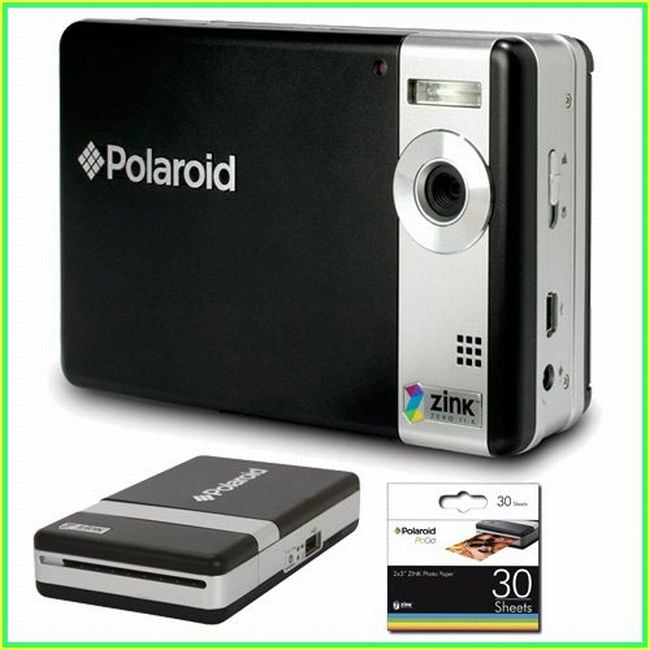
The reagent contained a solvent for silver halide such as sodium thiosulfate, for example. The reagent was contained in a pod, which would be pressed and eventually broken by the rollers that would then spread the reagent across the film. True black and white films were released in 1950 after problems with chemistry stabilization were overcome. After a minute, depending on film type and ambient temperature, the negative is peeled away to reveal the picture which was transferred to the positive receiving sheet. The negative develops quickly, after which some of the unexposed silver halide grains (and the latent image it contains) are solubilized by the reagent and transferred by diffusion from the negative to the positive.

A negative sheet is exposed inside the camera, then lined up with a positive sheet and squeezed through a set of rollers which spread a reagent between the two layers, creating a developing film "sandwich". The first instant films produced sepia tone photos. Land introduced the Polaroid-Land process. The process varies according to the film type. Instant positive film (which produces a print) uses diffusion transfer to move the dyes from the negative to the positive via a reagent. Two companies currently manufacture instant film: Fujifilm, with Instax integral film for its Instax cameras, and Polaroid (previously The Impossible Project) for older Polaroid cameras (600, SX-70, and 8×10) and its I-Type cameras.

#Instant printer for camera iso#
Current instant film formats typically have an ISO between 1. Instant film is notable for having had a wider range of film speeds available than other negative films of the same era, having been produced in ISO 4 to ISO 20,000 (Polaroid 612).
#Instant printer for camera professional#
Instant film has been supplanted for most purposes by digital photography, which allows the result to be viewed immediately on a display screen or printed with dye sublimation, inkjet, or laser home or professional printers. Instant film is also used by artists to achieve effects that are impossible to accomplish with traditional photography, by manipulating the emulsion during the developing process, or separating the image emulsion from the film base. Some photographers use instant film for test shots, to see how a subject or setup looks before using conventional film for the final exposure. Instant film was used where it was undesirable to have to wait for a roll of conventional film to be finished and processed, e.g., documenting evidence in law enforcement, in health care and scientific applications, and producing photographs for passports and other identity documents, or simply for snapshots to be seen immediately. Though the quality of integral instant film is not as high as conventional film, peel apart black and white film (and to a lesser extent color film) approached the quality of traditional film types. Early instant film was distributed on rolls, but later and current films are supplied in packs of 8 or 10 sheets, and single sheet films for use in large format cameras with a compatible back. Instant film has been available in sizes from 24 mm × 36 mm (0.94 in × 1.42 in) (similar to 135 film) up to 50.8 cm × 61 cm (20 in × 24 in) size, with the most popular film sizes for consumer snapshots being approximately 83 mm × 108 mm (3.3 in × 4.3 in) (the image itself is smaller as it is surrounded by a border). In 1972, Polaroid introduced integral film, which incorporated timing and receiving layers to automatically develop and fix the photo without any intervention from the photographer. This film sandwich develops for some time after which the positive sheet is peeled away from the negative to reveal the developed photo. In earlier Polaroid instant cameras the film is pulled through rollers, breaking open a pod containing a reagent that is spread between the exposed negative and receiving positive sheet. The film contains the chemicals needed for developing and fixing the photograph, and the camera exposes and initiates the developing process after a photo has been taken. Instant film is a type of photographic film that was introduced by Polaroid Corporation to produce a visible image within minutes or seconds of the photograph's exposure. Lower right: An undeveloped photo, with chemicals still in the pouch at the bottom. Lower left: A photo as the opacifiers clear - the photo is already fully developed beneath. Upper right: Completely exposed developed photo.

Upper left: Completely unexposed developed photo. Photographic film which develops in minutes Photographs made using Instax film.


 0 kommentar(er)
0 kommentar(er)
